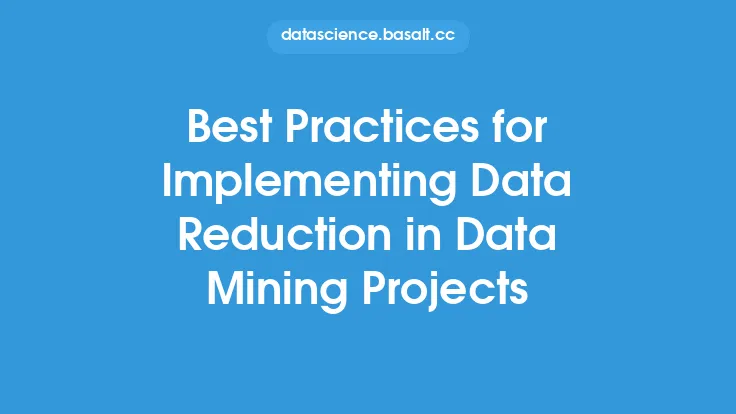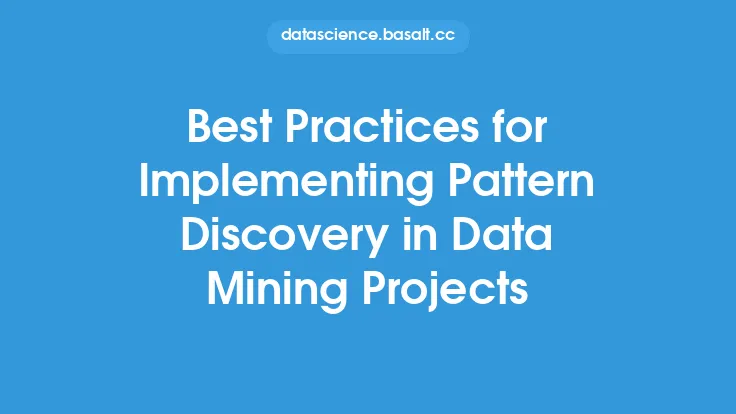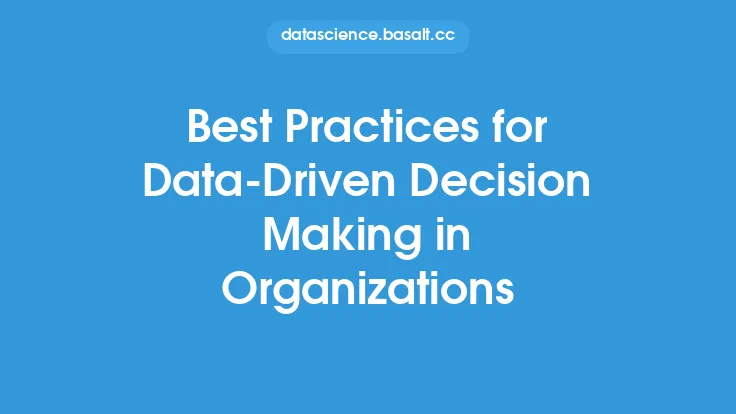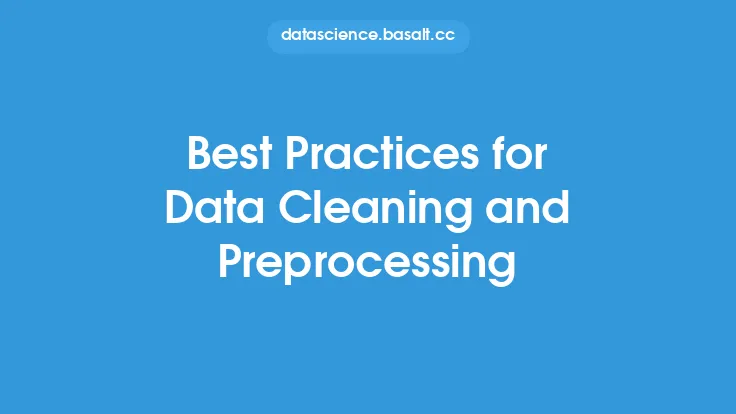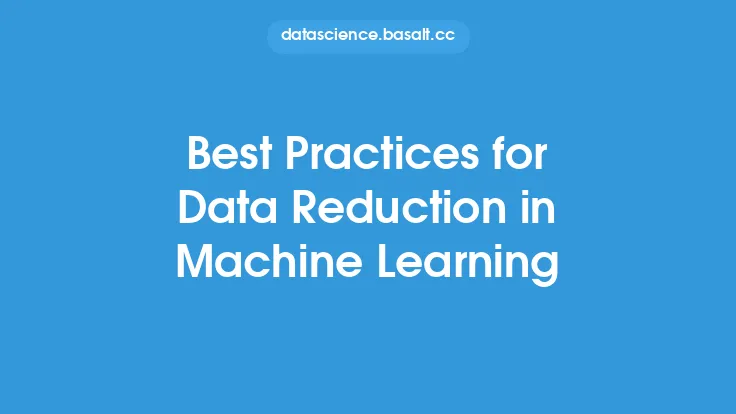Data preprocessing is a crucial step in the data mining process, as it directly affects the quality and reliability of the results. It involves a series of operations that transform raw data into a format suitable for analysis. The goal of data preprocessing is to ensure that the data is consistent, accurate, and relevant to the problem being addressed. In this article, we will discuss the best practices for data preprocessing in data mining, highlighting the key steps and techniques involved in this process.
Introduction to Data Preprocessing Techniques
Data preprocessing techniques are used to improve the quality of the data and to prepare it for analysis. These techniques include data cleaning, data transformation, data reduction, and data normalization. Data cleaning involves identifying and correcting errors in the data, such as missing or duplicate values. Data transformation involves converting the data into a suitable format for analysis, such as aggregating data or converting categorical variables into numerical variables. Data reduction involves reducing the size of the dataset by selecting a subset of the most relevant variables or by aggregating the data. Data normalization involves scaling the data to a common range, usually between 0 and 1, to prevent differences in scales from affecting the analysis.
Data Quality Considerations
Data quality is a critical aspect of data preprocessing. High-quality data is accurate, complete, and consistent, and is free from errors and inconsistencies. Data quality can be affected by a variety of factors, including data entry errors, measurement errors, and data integration errors. To ensure high-quality data, it is essential to implement data validation and data verification procedures. Data validation involves checking the data for errors and inconsistencies, while data verification involves checking the data against external sources to ensure its accuracy.
Handling Outliers and Noisy Data
Outliers and noisy data can significantly affect the results of data analysis. Outliers are values that are significantly different from the other values in the dataset, while noisy data is data that contains random errors or variations. To handle outliers and noisy data, several techniques can be used, including data smoothing, data filtering, and data transformation. Data smoothing involves reducing the effect of outliers and noisy data by using techniques such as moving averages or regression analysis. Data filtering involves removing outliers and noisy data from the dataset, while data transformation involves converting the data into a format that is less sensitive to outliers and noisy data.
Data Transformation and Feature Engineering
Data transformation and feature engineering are critical steps in data preprocessing. Data transformation involves converting the data into a suitable format for analysis, such as aggregating data or converting categorical variables into numerical variables. Feature engineering involves creating new variables or features from the existing data, such as creating interaction terms or polynomial terms. The goal of feature engineering is to create a set of features that are relevant to the problem being addressed and that can be used to build a robust and accurate model.
Data Reduction and Feature Selection
Data reduction and feature selection are used to reduce the size of the dataset and to select the most relevant variables. Data reduction involves reducing the size of the dataset by selecting a subset of the most relevant variables or by aggregating the data. Feature selection involves selecting a subset of the most relevant variables or features from the dataset. Several techniques can be used for feature selection, including correlation analysis, mutual information, and recursive feature elimination.
Best Practices for Data Preprocessing
To ensure that the data is properly preprocessed, several best practices should be followed. First, the data should be thoroughly cleaned and validated to ensure that it is accurate and consistent. Second, the data should be transformed into a suitable format for analysis, such as aggregating data or converting categorical variables into numerical variables. Third, the data should be reduced to a manageable size by selecting a subset of the most relevant variables or by aggregating the data. Fourth, the data should be normalized to prevent differences in scales from affecting the analysis. Finally, the data should be regularly monitored and updated to ensure that it remains accurate and relevant.
Common Data Preprocessing Mistakes
Several common mistakes can be made during data preprocessing, including failing to clean and validate the data, failing to transform the data into a suitable format, and failing to reduce the size of the dataset. Additionally, failing to normalize the data and failing to regularly monitor and update the data can also lead to poor results. To avoid these mistakes, it is essential to follow best practices for data preprocessing and to carefully evaluate the data before analysis.
Tools and Techniques for Data Preprocessing
Several tools and techniques are available for data preprocessing, including data mining software, statistical software, and programming languages. Data mining software, such as SAS and SPSS, provides a range of tools and techniques for data preprocessing, including data cleaning, data transformation, and data reduction. Statistical software, such as R and Python, provides a range of tools and techniques for data analysis and modeling. Programming languages, such as Java and C++, can be used to develop custom data preprocessing tools and techniques.
Conclusion
Data preprocessing is a critical step in the data mining process, as it directly affects the quality and reliability of the results. By following best practices for data preprocessing, including data cleaning, data transformation, data reduction, and data normalization, high-quality data can be ensured. Additionally, by using a range of tools and techniques, including data mining software, statistical software, and programming languages, data preprocessing can be efficiently and effectively performed. By carefully evaluating the data and avoiding common mistakes, accurate and reliable results can be obtained, and informed decisions can be made.
